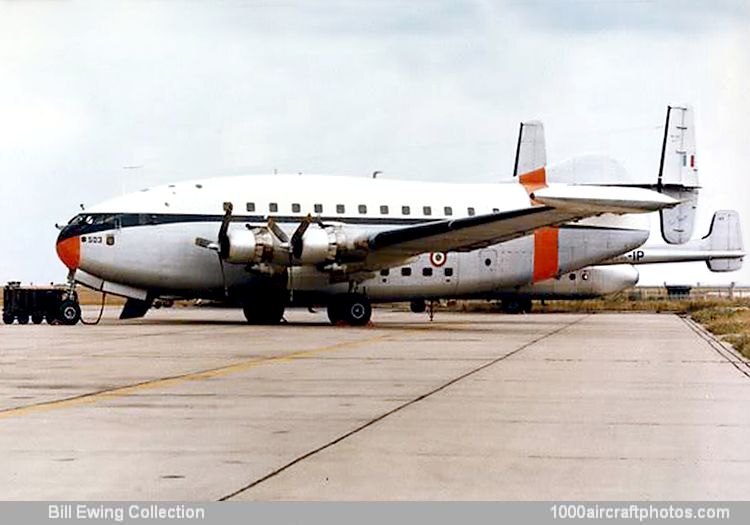12/29/2014. Remarks by Johan Visschedijk: "The Breguet Sahara had its origins in a 1944 design for a large aircraft to be used in either the passenger or cargo role. However, the prototype of this aircraft, the Br 761 Deux Ponts (two decks), did not fly until February 15, 1949. It was powered by four 1,580 hp Snecma-built Gnome & Rhône 14R engines but the three Br 761s which followed it were powered by four 2020 hp Pratt & Whitney R-2800-B31 Double Wasp engines. These aircraft differed from the prototype only in that they had modified wing tips and three tail fins.
These three pre-production aircraft were used to conclude the outstanding flight tests, and, despite the fact that they seemed to do this satisfactorily, Air France was not particularly impressed. The reason for this was probably the use of unsatisfactory war surplus Pratt & Whitney engines, although one aircraft was leased to Air Algérie and one was in service with Silver City for a short period before being transferred to the French AF.
In 1951, a structurally improved version, with 2,400 hp R-2800-CA18 engines, was put forward, designated Br 763 Provence. Air France ordered twelve Provences and the first of these flew on July 20, 1951. Air France received its first example in August 1952 and this was put into regular service on the Lyons-Algiers route on March 16, 1953. In the first seven years the twelve aircraft covered over 31 million miles (50 million kilometers), carrying 3 million passengers. In 1964, six of these aircraft went to the French AF for service in the Far East, but Air France continued to use the type as a freighter up to 1971.
Although not a particularly handsome aircraft, the Br 763 had a reputation for being extremely capable. It had a double-decker layout, with 59 passengers on the upper deck and 48 on the lower deck, although 135 passengers could be carried in high-density configuration. Known as a 'hard worker', the Provence could be used for carrying both cargo and passengers. In fact the all-cargo version could carry 24,251 lb (11,000 kg) of freight or it could be used for ferrying vehicles, loaded through clamshell doors under the rear fuselage.
The French AF ordered four Br 765s, these had removable cargo doors and were capable of carrying a load of 37,479 lb (17,000 kg) or 128 fully equipped troops. These saw service with the 64e Escadre de Transport, together with the three Br 761s and the six Br 763. The last of these aircraft was in service with Groupe Aérien Mixte 82 until late 1972.
The pictured aircraft was coded 64-PG and for support flights outside of France it used the civil call sign F-RAPG."
